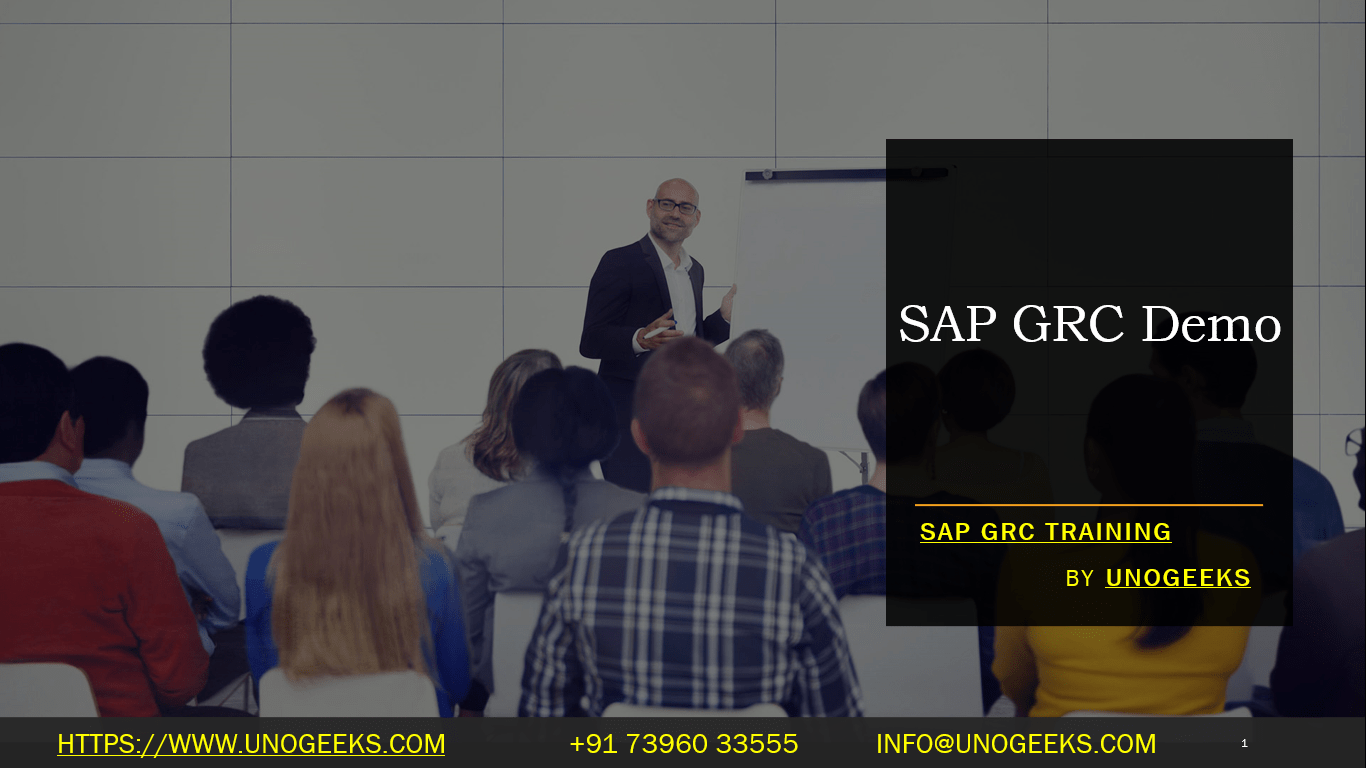SAP GRC Demo
SAP GRC Demo: A Hands-On Guide to Streamlining Compliance
Governance, Risk, and Compliance (GRC) are becoming increasingly critical for businesses in today’s complex regulatory landscape. SAP GRC offers solutions that help organizations manage compliance, reduce risk, and improve operational efficiency. A well-run SAP GRC demo is the perfect way to showcase these benefits to your stakeholders.
What is SAP GRC?
SAP GRC is a modular software platform that provides tools and features to:
- Manage Risks: Identify, analyze, assess, mitigate, and monitor risks across the enterprise.
- Ensure Compliance: Automate compliance assessments, implement internal controls and manage regulatory reporting requirements.
- Control Access: Enforce segregation of duties (SoD), manage user authorizations, and streamline access provisioning processes.
Critical Modules in SAP GRC
A typical SAP GRC demo will usually highlight some of these essential modules:
- Access Control: This is the core module for managing access, identifying SoD conflicts, and automating user provisioning and de-provisioning.
- Process Control: You can design, document, and monitor business process controls with workflow-based automation.
- Risk Management: Provides the framework for continuous risk identification, analysis, risk response, and real-time risk monitoring.
Preparing for an Effective SAP GRC Demo
A successful demo requires planning and preparation. Here’s what to consider:
- Audience and Objectives: Tailor the demo to the specific audience (IT, business managers, executives) and focus on the pain points and goals that SAP GRC can address.
- Use Cases: Select a few relevant business scenarios that showcase SAP GRC’s value proposition. Examples include automating financial controls, managing IT security risks, or streamlining compliance reporting.
- Demo Script and Data: Develop a straightforward script outlining the scenario, the features being demonstrated, and their benefits. Prepare realistic sample data that mirrors the audience’s environment.
During the Demo
- Keep it Engaging: Use visuals and live data, and avoid excessive technical jargon.
- Highlight Benefits: Focus on the business impact and value that SAP GRC can deliver, such as increased efficiency, reduced risk, and improved compliance.
- Encourage Participation: Allow for questions and invite feedback from the audience.
After the Demo
- Follow-up: Provide additional documentation resources and offer the opportunity to schedule more specific follow-up sessions.
- Measure Success: Collect participant feedback and track potential lead conversion opportunities to evaluate the demo’s effectiveness.
Example: Demo Scenario
Consider a demo scenario focusing on access control and SoD management. This could include:
- Showcasing how SAP GRC identifies potential SoD conflicts during an access request process.
- Demonstrating how risk analysis and mitigation workflows are triggered automatically based on identified risks.
- Illustrating how reporting tools streamline compliance audits and provide insights into access risks.
Conclusion
A well-executed SAP GRC demo can be a powerful tool for demonstrating the platform’s value and building a compelling case for investment. By understanding your audience, focusing on real-world scenarios, and preparing effectively, you can showcase how SAP GRC can contribute to your organization’s risk management and compliance strategies.
Conclusion:
Unogeeks is the No.1 IT Training Institute for SAP GRC Training. Anyone Disagree? Please drop in a comment
You can check out our other latest blogs on SAP GRC here – SAP GRC Blogs
You can check out our Best In Class SAP GRC Details here – SAP GRC Training
Follow & Connect with us:
———————————-
For Training inquiries:
Call/Whatsapp: +91 73960 33555
Mail us at: info@unogeeks.com
Our Website ➜ https://unogeeks.com
Follow us:
Instagram: https://www.instagram.com/unogeeks
Facebook: https://www.facebook.com/UnogeeksSoftwareTrainingInstitute
Twitter: https://twitter.com/unogeeks
